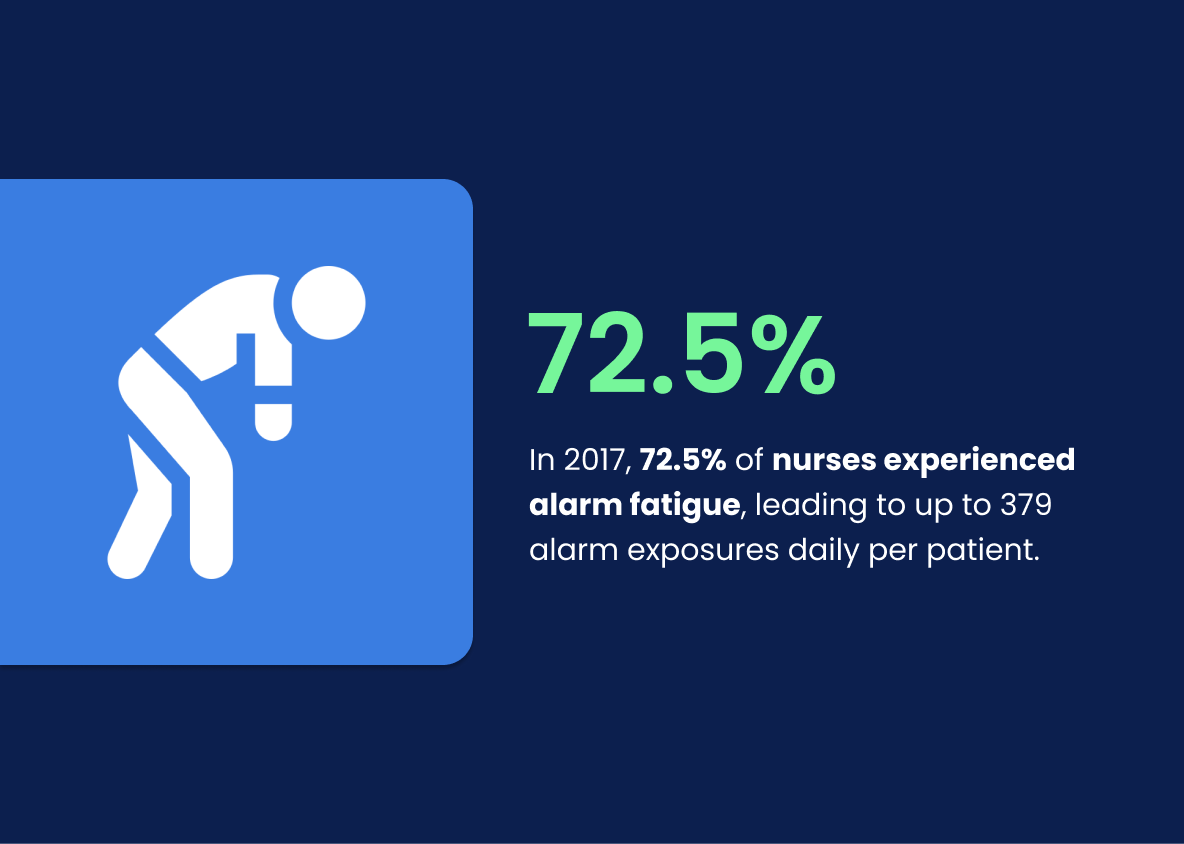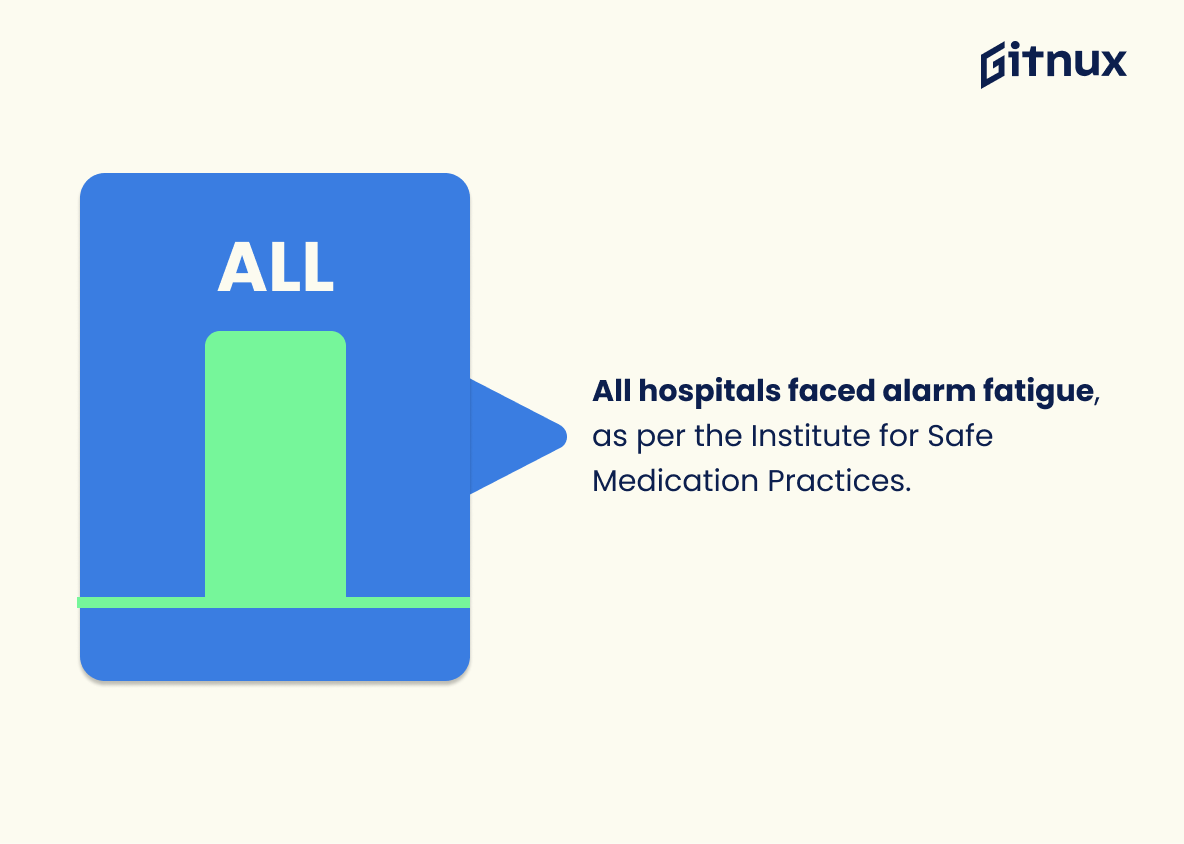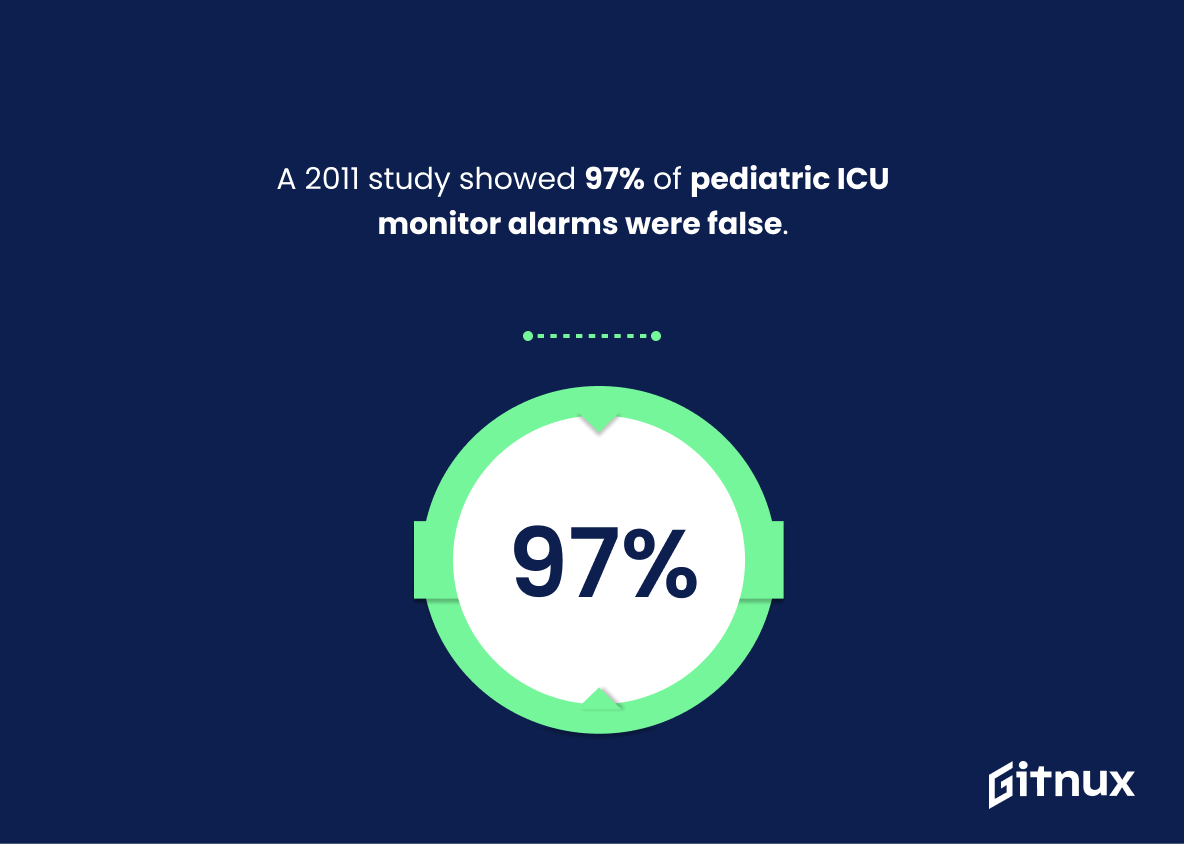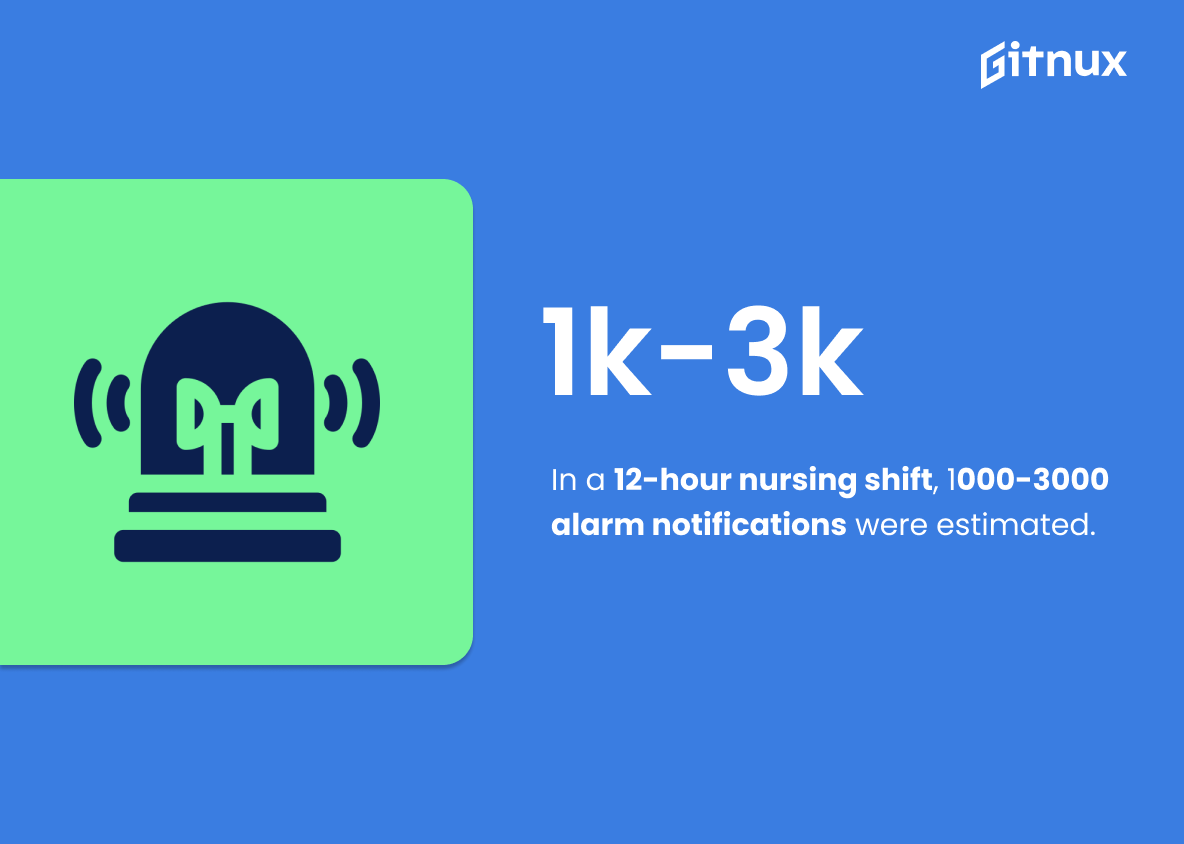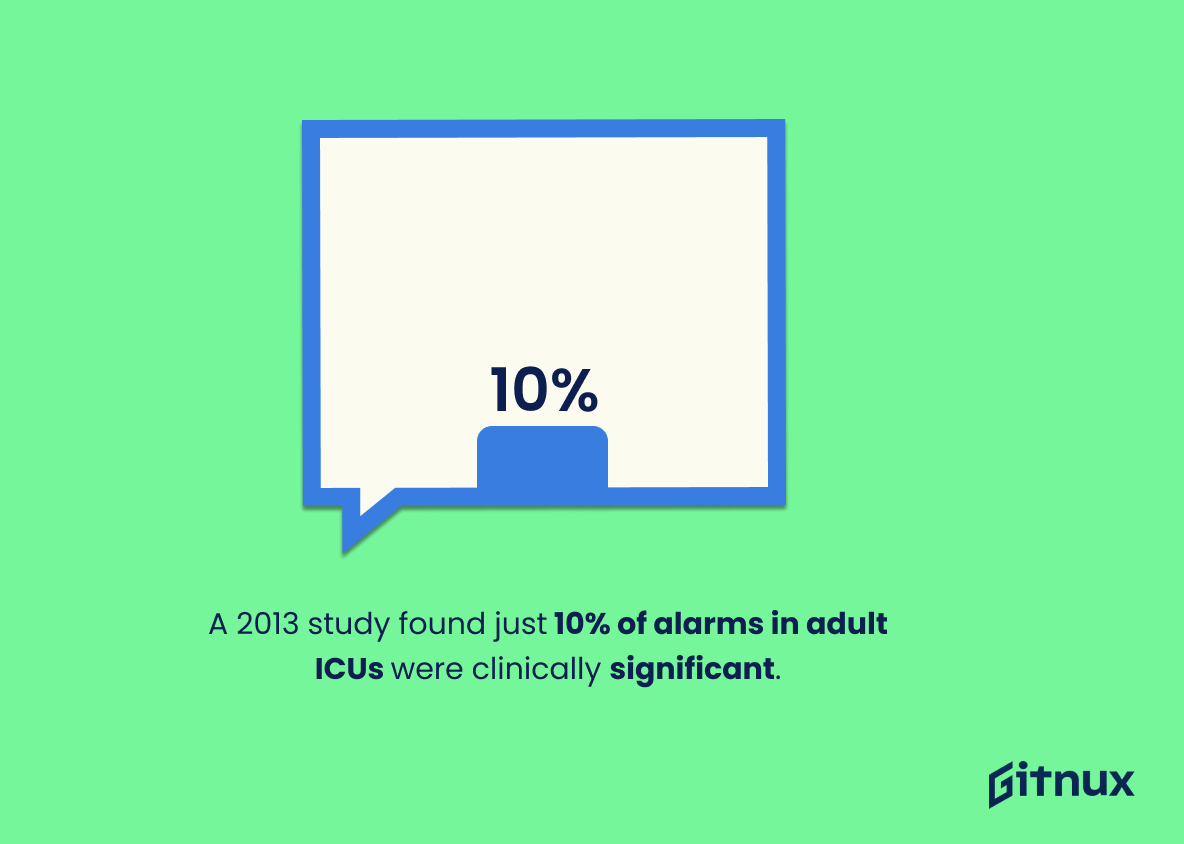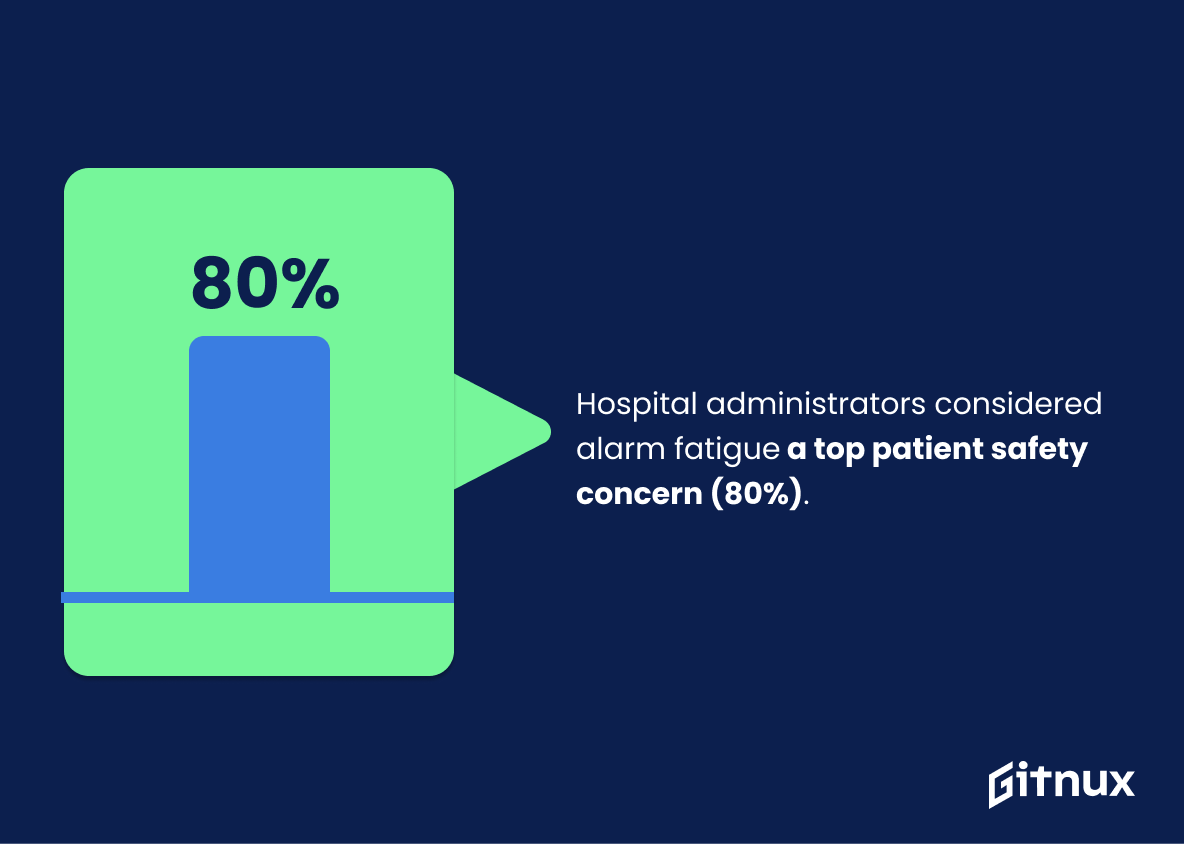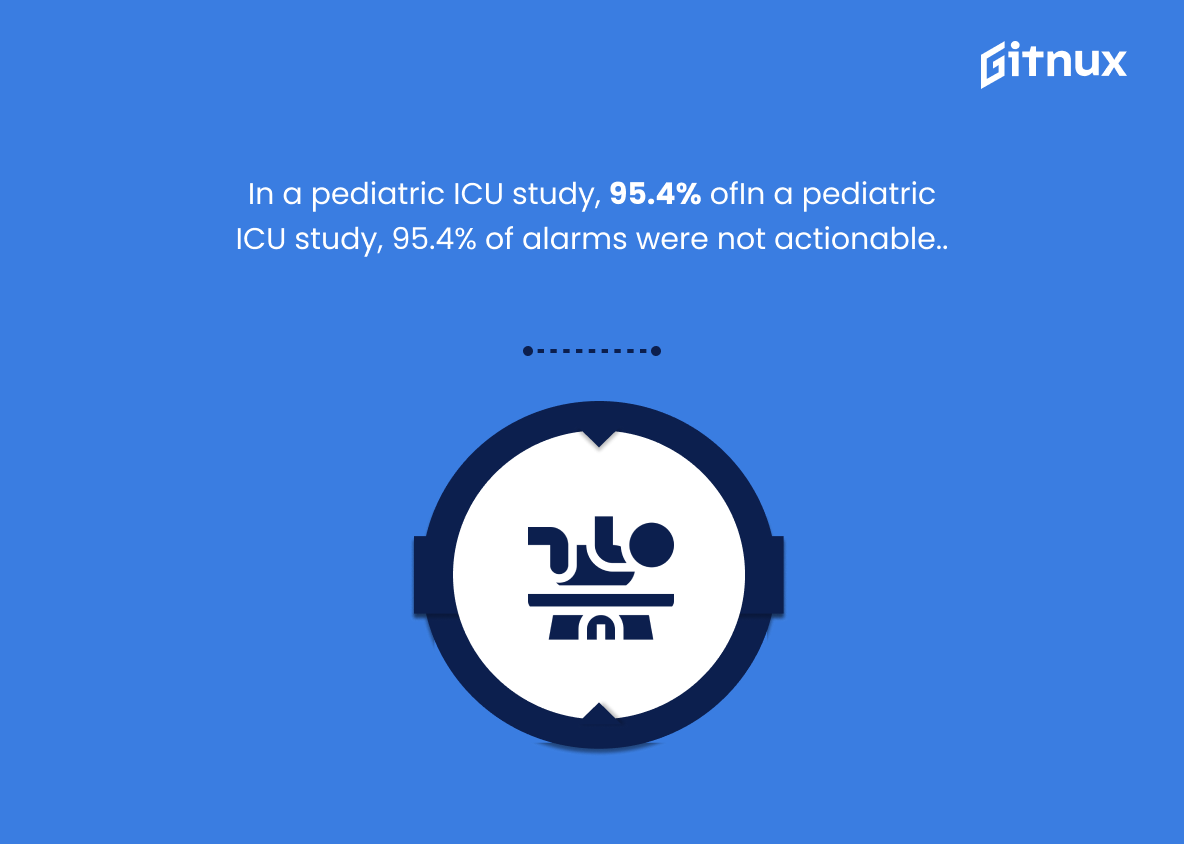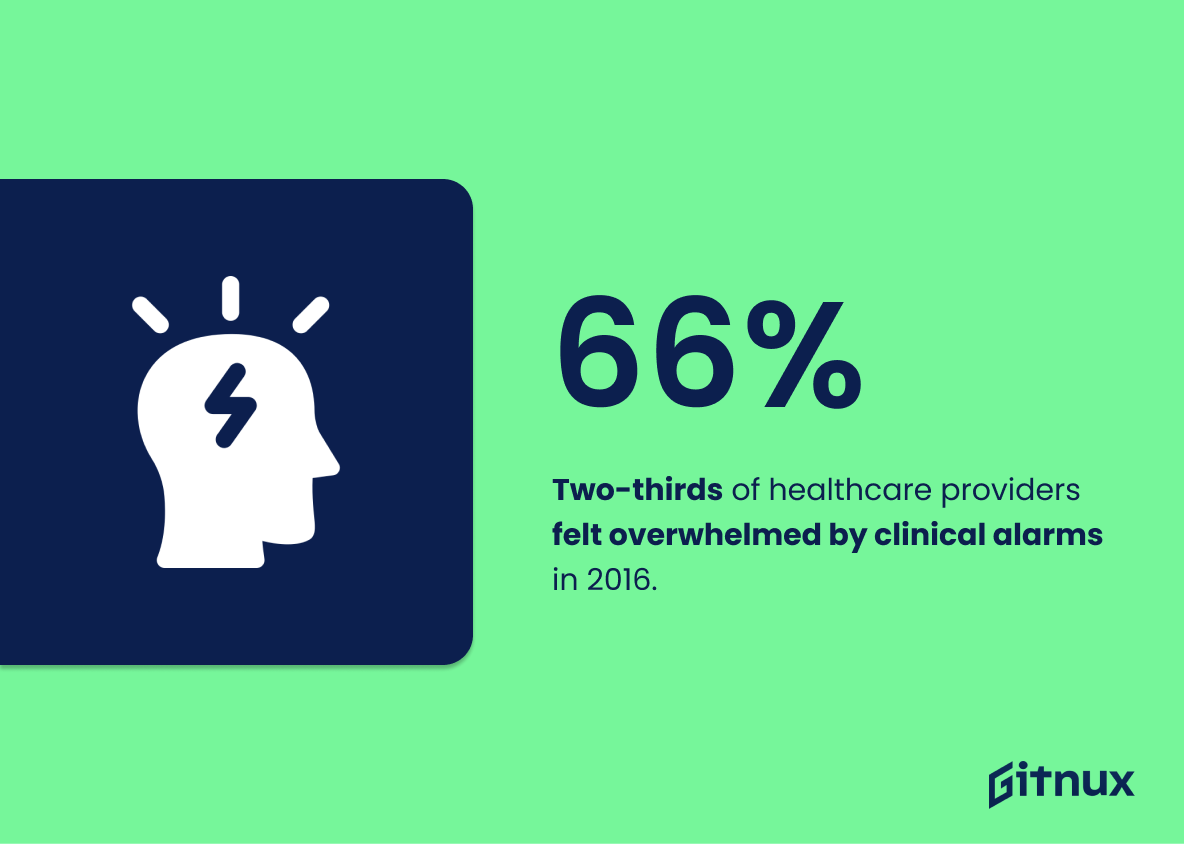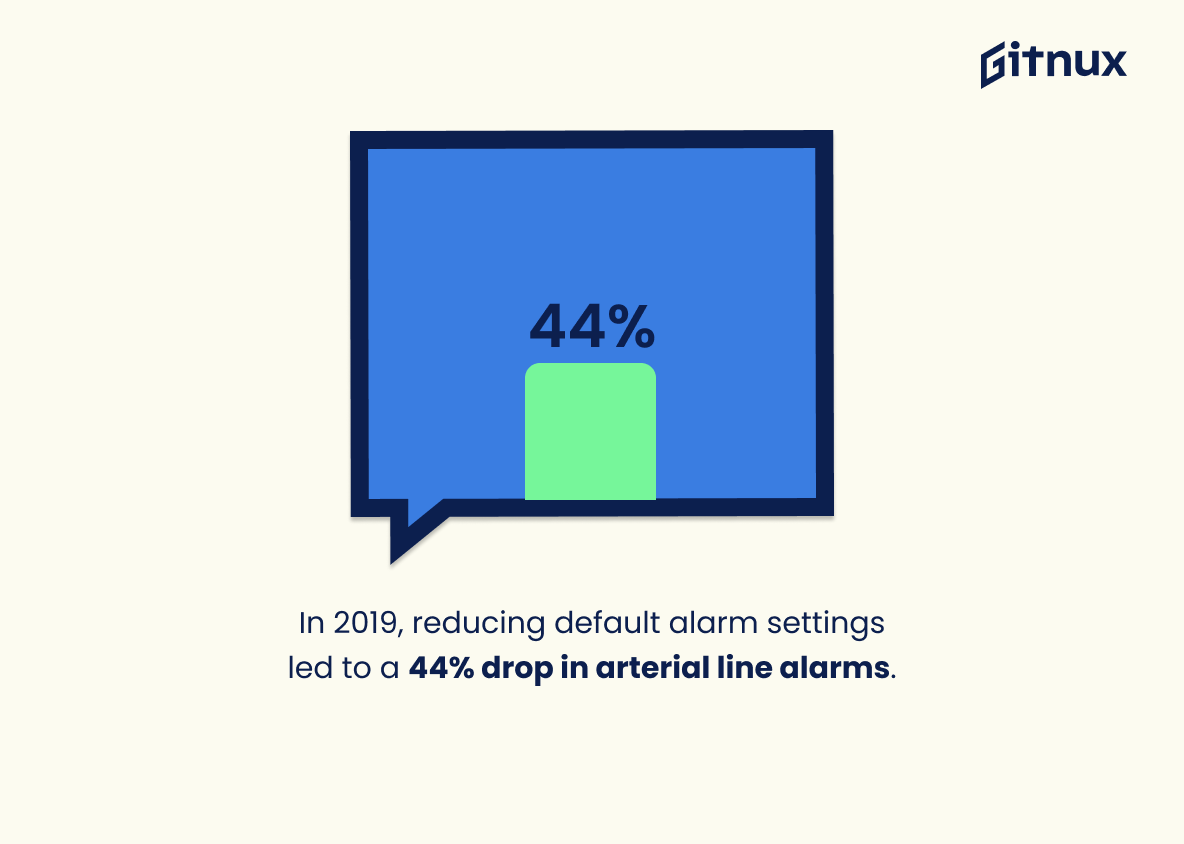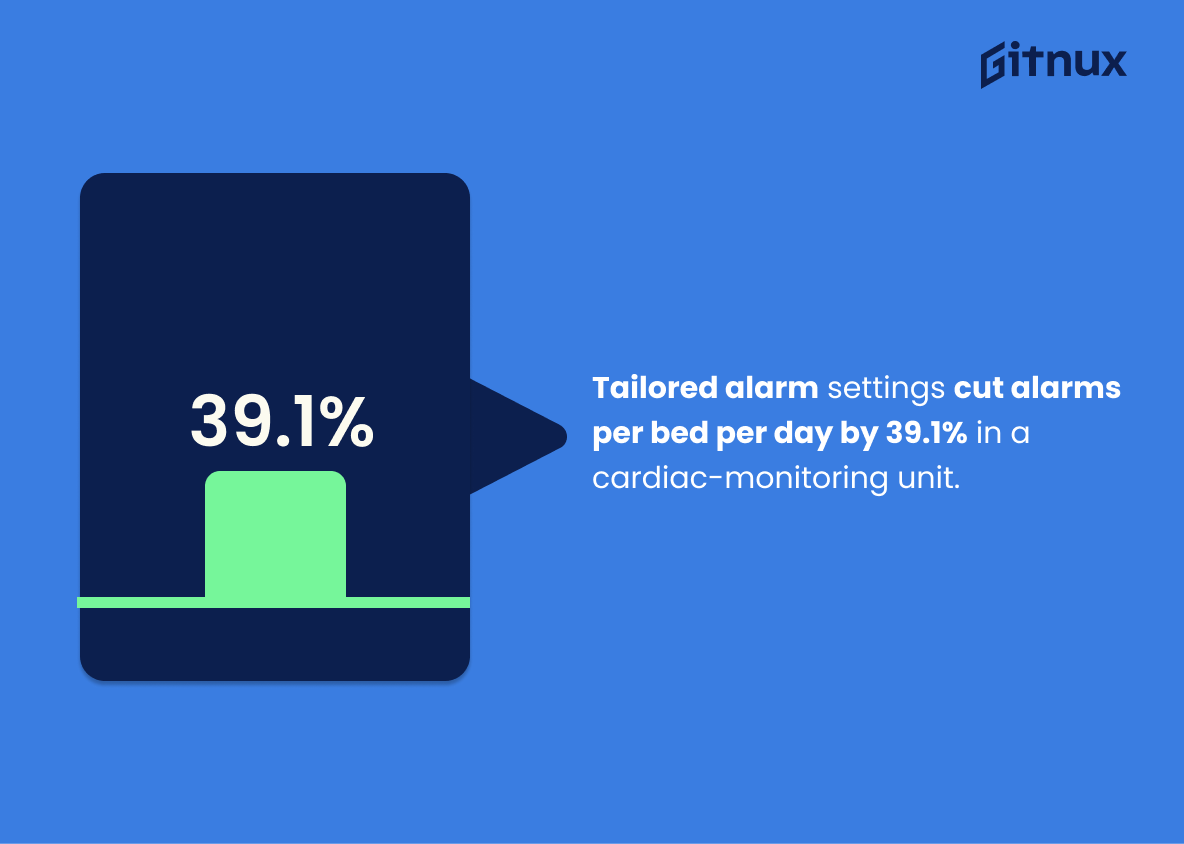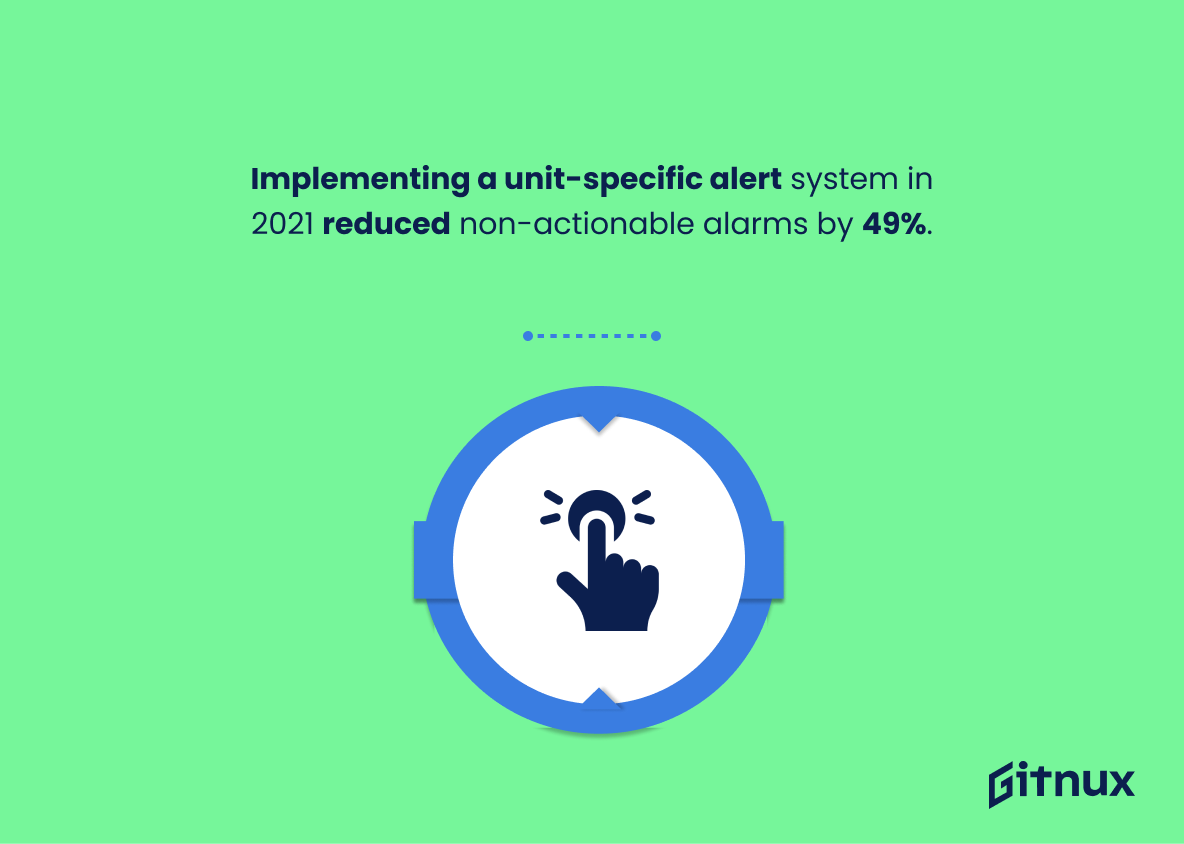Alarm fatigue is a serious issue in healthcare, with potentially devastating consequences. According to statistics from The Joint Commission (2014-2018), alarm fatigue contributes to 10% of sentinel events reported. In 2013, the Joint Commission reported 80 deaths and 13 severe injuries related to alarm fatigue in the United States alone. A 2017 study found that 72.5% of nurses experienced alarm fatigue, resulting in up to 379 alarms per patient per day at one large urban tertiary care facility—an average of 153 alarms per patient each day. Furthermore, 88% of bedside nurses and caregivers believed enhancing alarm management would reduce this alarming trend according to a 2019 study by The Joint Commission.
The Institute for Safe Medication Practices reports 100% hospital participation when it comes to experiencing alarm fatigue; while a 2011 pediatric intensive care unit study revealed 97% false alarms out of 6,000 monitor alerts registered during their research period—and an estimated 1000-3000 triggered notifications within 12 hours on any given nursing shift as noted by another 2018 survey report.
A 2013 adult ICU analysis showed only 10 percent clinically significant among all monitored patients’ alert signals; whereas 91 percent clinicians admitted desensitization due American Association Critical Care Nurses’ findings back then too. Moreover 80 percent administrators considered reducing such occurrences top priority concern according 2018 survey results; 95 point 4 % non actionable ones were observed inside pediatric ICUs same year – two thirds providers overwhelmed 2016 poll data suggested leading towards more cases like these – 44 % arterial line reduction after default settings alteration was seen 2019 & finally 49 % decrease under conditions prioritizing high quality settings 2021’s observation concluded so far. 87 point 9 critical care nurse affected significantly as well stated recent studies about Alarm Fatigue Statistics which we will be discussing further here today..
This statistic is a stark reminder of the impact alarm fatigue has had on patient safety. It highlights the fact that 10% of sentinel events reported to The Joint Commission (2014-2018) were due to alarm fatigue, demonstrating the need for healthcare providers to take steps to reduce the risk of alarm fatigue in their facilities.
In 2013, the Joint Commission reported 80 deaths and 13 severe injuries related to alarm fatigue in the United States.
This statistic serves as a stark reminder of the potential consequences of alarm fatigue. It highlights the importance of taking the necessary steps to reduce the risk of alarm fatigue-related incidents and underscores the need for healthcare organizations to prioritize alarm safety.
Alarm Fatigue Statistics Overview
A 2017 study found that 72.5% of nurses experienced alarm fatigue, resulting in up to 379 alarm exposures per patient per day.
This statistic is a stark reminder of the prevalence of alarm fatigue among nurses, with nearly three-quarters of them experiencing it. It also highlights the sheer number of alarm exposures per patient per day, which can be overwhelming and lead to desensitization. This is a serious issue that needs to be addressed, as alarm fatigue can lead to medical errors and patient harm.
In a large, urban tertiary care facility, approximately 2.4 million alarms sounded in 31 days—an average of 153 alarms per patient per day.
This statistic is a stark reminder of the overwhelming amount of alarms that sound in a large, urban tertiary care facility. It paints a vivid picture of the sheer volume of alarms that can occur in a single day, with an average of 153 alarms per patient. This statistic serves as a powerful illustration of the potential for alarm fatigue in such a setting.
In a 2019 study, 88% of bedside nurses and caregivers believed enhancing alarm management would reduce alarm fatigue.
This statistic is a powerful indicator of the need for improved alarm management. It shows that the majority of bedside nurses and caregivers recognize the importance of reducing alarm fatigue and are willing to take steps to make it happen. This is an important reminder that alarm fatigue is a real issue that needs to be addressed, and that the healthcare industry needs to take action to ensure that alarm fatigue is minimized.
According to the Institute for Safe Medication Practices, 100% of hospitals have experienced alarm fatigue.
This statistic is a stark reminder that alarm fatigue is a pervasive issue in hospitals. It shows that no hospital is immune to the problem, and that it is a widespread issue that needs to be addressed.
A 2011 study revealed that for every 6,000 monitor alarms registered in a pediatric intensive care unit, 97% were false alarms.
This statistic is a powerful indicator of the prevalence of alarm fatigue in pediatric intensive care units. It shows that the vast majority of alarms registered in these units are false, meaning that medical staff are being inundated with unnecessary notifications and alerts. This can lead to desensitization and a decrease in response time, both of which can have serious consequences for patient safety.
In a 12-hour nursing shift, an estimated 1000-3000 alarm notifications are triggered.
This statistic serves as a stark reminder of the sheer volume of alarm notifications that nurses must contend with during a single shift. It highlights the potential for alarm fatigue to occur, as nurses may become desensitized to the sheer number of notifications they receive.
A 2013 study in adult-intensive care units showed only 10% of alarms were clinically significant.
This statistic is a stark reminder of the prevalence of alarm fatigue in adult-intensive care units. It highlights the fact that the majority of alarms are not clinically significant, meaning that medical staff are being inundated with unnecessary notifications. This can lead to desensitization and a decrease in response time to alarms that are actually important.
The American Association of Critical-Care Nurses states that 91% of clinicians report alarm desensitization, leading to decreased staff responsiveness.
This statistic is a stark reminder of the dangers of alarm desensitization. It highlights the fact that 91% of clinicians are not responding to alarms as they should, leading to potentially life-threatening consequences. It is a powerful illustration of the need for healthcare providers to take alarm fatigue seriously and to take steps to ensure that alarms are responded to appropriately.
A 2018 survey revealed that 80% of hospital administrators believed alarm fatigue was a top patient safety concern.
This statistic is a powerful indicator of the severity of alarm fatigue as a patient safety concern. It shows that the majority of hospital administrators recognize the issue and are taking steps to address it. This statistic is a clear sign that alarm fatigue is a major issue that needs to be addressed, and it serves as a call to action for healthcare providers to take steps to reduce alarm fatigue and improve patient safety.
In a pediatric intensive care unit study, a staggering 95.4% of alarms were not actionable.
This statistic is a stark reminder of the prevalence of alarm fatigue in pediatric intensive care units. It highlights the need for improved alarm systems that can accurately distinguish between actionable and non-actionable alarms, so that medical staff can focus on responding to the alarms that require their attention.
A 2016 survey identified that two-thirds of healthcare providers report being overwhelmed by clinical alarms, leading to alarm fatigue.
This statistic serves as a stark reminder of the prevalence of alarm fatigue among healthcare providers. It highlights the need for healthcare organizations to take steps to reduce the number of alarms and prioritize the most important ones. It also underscores the importance of providing healthcare providers with the necessary tools and resources to manage alarms more effectively.
In a 2019 study, it was found that reducing default alarm settings led to a 44% reduction in arterial line alarms.
This statistic is a powerful testament to the effectiveness of reducing default alarm settings in reducing alarm fatigue. It shows that by making a simple change, healthcare providers can drastically reduce the number of alarms they have to deal with, allowing them to focus on providing better care to their patients.
A 2018 analysis of alarm reduction strategies observed that more than 80% of alarms were successfully reduced under conditions prioritizing high-quality alarm settings.
This statistic is a testament to the effectiveness of alarm reduction strategies. It shows that when high-quality alarm settings are prioritized, the majority of alarms can be successfully reduced. This is an important finding for healthcare professionals, as it demonstrates that alarm fatigue can be managed and reduced through the implementation of appropriate strategies.
A study in a cardiac-monitoring unit showed that alarms per bed per day decreased by 39.1% after introducing tailored alarm settings.
This statistic is a testament to the effectiveness of tailored alarm settings in reducing alarm fatigue. It demonstrates that when alarm settings are tailored to the individual patient, the number of alarms per bed per day can be significantly reduced. This is an important finding, as it shows that alarm fatigue can be addressed through targeted interventions.
In a 2021 study, implementing a unit-specific alert management system reduced non-actionable alarms by 49%.
This statistic is a testament to the effectiveness of a unit-specific alert management system in reducing non-actionable alarms. It shows that such a system can be a powerful tool in combating alarm fatigue, which can be a major issue in healthcare settings. By reducing the number of non-actionable alarms, healthcare professionals can focus their attention on the alarms that actually require their attention, leading to better patient care.
A 2017 study found that the odds of feeling high or somewhat-high levels of alarm fatigue were eight times higher in those who had no control over alarm settings compared to those who could customize them.
This statistic is a powerful indicator of the importance of allowing healthcare professionals to customize alarm settings. It demonstrates that those who have no control over alarm settings are far more likely to experience alarm fatigue, which can have serious consequences for patient safety. This statistic is a clear call to action for healthcare organizations to ensure that their staff have the ability to customize alarm settings in order to reduce the risk of alarm fatigue.
According to a study, alarm fatigue significantly affects up to 87.9% of critical care nurses.
This statistic is a stark reminder of the prevalence of alarm fatigue among critical care nurses. It serves as a powerful illustration of the magnitude of the issue, and highlights the need for further research and action to address this problem.
It is estimated that only 2-12% of audible alarms in hospitals are actual indications of actionable events.
This statistic is a stark reminder of the prevalence of alarm fatigue in hospitals. It highlights the fact that the vast majority of audible alarms are false alarms, meaning that medical staff are often overwhelmed with unnecessary notifications and alerts. This can lead to desensitization and a lack of response to actual actionable events, which can have serious consequences for patient safety.
Conclusion
Alarm fatigue is a serious issue in healthcare, with numerous studies showing its prevalence and impact. The Joint Commission reported 80 deaths and 13 severe injuries related to alarm fatigue between 2014-2018, while a 2017 study found that 72.5% of nurses experienced alarm fatigue resulting in up to 379 alarms per patient per day. In addition, an analysis of alarm reduction strategies observed that more than 80% of alarms were successfully reduced under conditions prioritizing high-quality settings.
Furthermore, it has been estimated that only 2-12% of audible alarms are actual indications of actionable events. These statistics demonstrate the need for improved management systems and tailored alert settings to reduce false or nonactionable alarms as well as staff desensitization due to overwhelming notifications during shifts—all contributing factors leading to increased risk for patients’ safety and wellbeing if not addressed properly by hospitals across the United States.
References
0. – https://www.ismp.org
1. – https://www.ncbi.nlm.nih.gov
2. – https://www.pubmed.ncbi.nlm.nih.gov
3. – https://www.aacn.org
4. – https://www.jointcommission.org
5. – https://www.ajc.com
